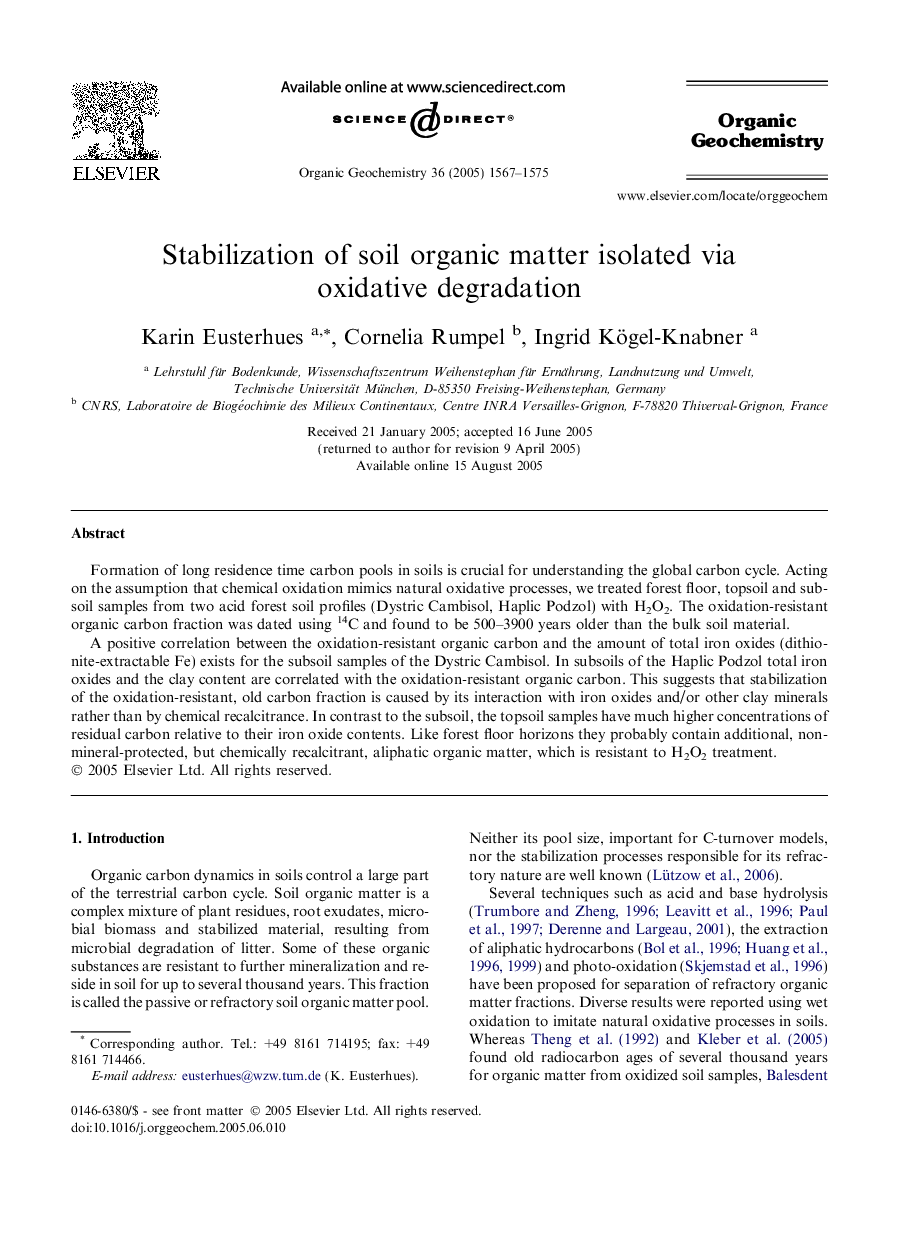| Article ID | Journal | Published Year | Pages | File Type |
|---|---|---|---|---|
| 9556279 | Organic Geochemistry | 2005 | 9 Pages |
Abstract
A positive correlation between the oxidation-resistant organic carbon and the amount of total iron oxides (dithionite-extractable Fe) exists for the subsoil samples of the Dystric Cambisol. In subsoils of the Haplic Podzol total iron oxides and the clay content are correlated with the oxidation-resistant organic carbon. This suggests that stabilization of the oxidation-resistant, old carbon fraction is caused by its interaction with iron oxides and/or other clay minerals rather than by chemical recalcitrance. In contrast to the subsoil, the topsoil samples have much higher concentrations of residual carbon relative to their iron oxide contents. Like forest floor horizons they probably contain additional, non-mineral-protected, but chemically recalcitrant, aliphatic organic matter, which is resistant to H2O2 treatment.
Related Topics
Physical Sciences and Engineering
Chemistry
Organic Chemistry
Authors
Karin Eusterhues, Cornelia Rumpel, Ingrid Kögel-Knabner,
